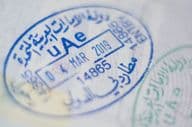Dubai's Airport-City Dream: More Than Flight

Al Maktoum International: Dubai's New Airport-City Ambition
Dubai never settles for merely creating something big; the goal is always to be world-leading—whether in tourism, real estate development, transportation, or economic zones. Now, the city is preparing for another gigantic leap: the construction of the world's largest airport. But Al Maktoum International, also known as Dubai World Central (DWC), being built in Dubai South, is much more than that—a whole city is emerging in the shadows of its runways.
The Gateway to the Future: More Than Just an Airport
The full-scale model showcased at the Dubai Airshow 2025 not only illustrates the future terminals and runways but also the entire city environment being constructed around the airport. It will not merely be a transit point but a complex filled with residential areas, cultural institutions, business centers, schools, hotels, and green spaces.
Located roughly 35 kilometers south of Dubai Marina, DWC will feature five parallel runways, 400 plane gates, and a central passenger terminal connected to four concourses. The entire project's first phase is set to be completed by 2032, with the capacity to handle 150 million passengers annually, eventually increasing to 260 million, making DWC the world's busiest airport.
A New City Rises in the Desert
The new airport and the city being built around it will cover a total area of 145 square kilometers. This represents a massive leap not only logistically and transport-wise but also socially and economically. It will provide homes for over a million people, compared to the current population of about 25,000. This means enormous demand in the real estate market, encourages new developments, and creates thousands of new jobs—not just in construction, but also in service, educational, healthcare, and retail sectors as well.
Alongside job creation, significant emphasis will be placed on the transport infrastructure: DWC will be linked to major highways (Sheikh Zayed Road, Emirates Road, Sheikh Mohammed Bin Zayed Road) and is expected to have a stop on the Etihad Rail line, which stretches from Abu Dhabi up to the Omani border. A new metro line, self-driving vehicles, and air taxi services will also be available, fully integrating the "airport city" into Dubai's and the entire UAE's transport network.
A Hub of Culture and Innovation
The airport city is being prepared not only to serve passengers and logistics. Plans include an opera house, theater, exhibition halls, and a performing arts academy, greatly enriching Dubai's cultural offerings. This could encourage artists and creative professionals from all over the world to settle, work, or even start businesses in this area. Incubators and creative hubs will also have a place, encouraging innovation and cultural diversity.
The location is also strategic: DWC is only 20 minutes away from Expo City Dubai, which continues as the legacy of Expo 2020, and is close to the Dubai Parks and Resorts theme park chain.
A Green Vision: Sustainability at Its Core
Dubai's airport city has emphasized environmental awareness since the design phase. According to DAEP (Dubai Aviation Engineering Projects), the terminal buildings will be fully powered by renewable energy sources, mainly solar panels. The buildings will be equipped with thermal insulation and special sun-protection glazing to minimize energy consumption.
The passenger terminals will be ornamented with tree-lined green corridors and indoor tropical gardens. Perhaps the most spectacular feature will be the world's largest shading surface in the arrival area, which is not only functional but also aesthetically unique.
Sustainability doesn’t stop at the buildings. The airport will have its own monorail network operating between the internal zones, running through a small forested area, symbolizing the harmony between nature and technology. The green spaces, promenades, water surfaces, and entertainment centers promise a quality urban life that goes far beyond the functionality of a traditional airport.
A Destination for Future Investors
It's no surprise that DWC is already receiving tremendous attention from investors. A new segment of the real estate market opens as the surrounding residential areas, business districts, and service centers promise significant returns. The demand emerging in close proximity to the project offers long-term opportunities in leasing, sales, and trade.
Business real estate—office buildings, coworking spaces, logistics centers—are also attracting significant attention, as DWC will be a meeting point for air, land, and sea transportation, particularly due to the proximity of Jebel Ali port.
Conclusion
Dubai is not just building a new airport but a complete ecosystem that harmonizes urban life, economy, transportation, culture, and sustainability. Al Maktoum International and the Dubai South area organized around it represent the city of the future, where the airport is more than just a departure or arrival point; it is an experience.
This ambitious development may rightfully become Dubai’s next iconic neighborhood—a place that not only provides world-class services for passengers but a living space, workplace, and inspiration for millions.
(Source of the article: Based on the model presented at the Dubai Airshow event.)
If you find any errors on this page, please let us know via email.


